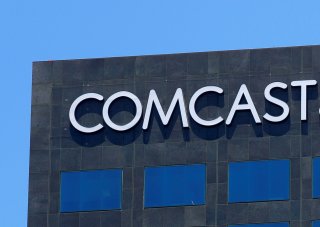Xfinity and Fios Will Cheer: Yes, Some Go Back to Cable After Cutting the Cord
With major new streaming services launching regularly, the tide is obviously going in one direction. But even so, there are reasons why someone who tried cord-cutting might want to go back to cable.
The cord-cutting trend, which was predicted and anticipated for years, has reached new heights. Comcast, Verizon, and AT&T all reported losses of cable subscribers in the first quarter, with AT&T losing over a million cable subscribers, while the other two companies reported big net increases in Internet signups.
This trend was clearly building even before the coronavirus pandemic brought most Americans home each day, while also completely eliminating one of the main sources of programming — live sports — that has traditionally tied many users to their cable subscriptions.
With major new streaming services launching regularly, the tide is obviously going in one direction. But even so, there are reasons why someone who tried cord-cutting might want to go back to cable.
The first reason is force of habit. Many TV viewers, especially of a certain age, are used to watching TV a certain way — shows on at a certain time, on a certain day of the week, on a certain channel. Not having that anymore, after a lifetime of watching that way, can be jarring, and enough to encourage someone to switch back.
Another is that while a big driving force is the ability to save money, streaming services are proliferating, and getting more expensive. Ever since the start of streaming services and cord cutting, many of us have been expecting that eventually, we'll all subscribe to 8-10 streaming services, and when all is said and done, it'll cost about the same as what cable used to cost. We're not there yet, but things are heading in that direction.
And while sports are gone now, they're not going to be gone forever. While such services as Hulu + Live TV and YouTube TV offer sports, as does ESPN+, most cord-cutting scenarios won't give you all the sports channels, especially local ones. If professional sports return in two or three months, perhaps some who embraced cord-cutting this spring will reverse their decision.
In the early days of the cord-cutting phenomenon, there were several pieces written in the tech press by those who had cut the cord but "relapsed."
"I Was a Cord Cutter … But I Fell Off the Wagon," Albert Lai of Brightcove wrote in 2013, for All Things D. He noted that he and his wife weren't on the same season of "Mad Men," having watched it on different devices.
In a Parks Associates blog post in 2014, author Ruby-Ren Bond spoke of having been a cord-cutter in college, but "as an adult with a family," had decided to switch to cable.
Brittany A. Roston wrote for Slashgear in 2016 that she had gotten cable again because "at some point, cord-cutting went from feeling like a good thing to feeling like a burden." She went on to state that "a single digital local library and a single streaming service turned into a whole bunch of different services that sprawl across my devices, season passes, and ever-changing digital libraries."
There haven't been so many of those pieces in recent years, possibly because cord-cutting has gotten easier, with most new TVs offering built-in Netflix and other services, and more and more content available without the need for a cable subscription. But even as cord-cutting grows, it appears some will still decide to stick with cable, or even switchback.
Stephen Silver, a technology writer for The National Interest, is a journalist, essayist and film critic, who is also a contributor to Philly Voice, Philadelphia Weekly, the Jewish Telegraphic Agency, Living Life Fearless, Backstage magazine, Broad Street Review and Splice Today. The co-founder of the Philadelphia Film Critics Circle, Stephen lives in suburban Philadelphia with his wife and two sons.
Image: Reuters.

